Apple earned $89.6 billion in revenue for the second fiscal quarter of 2021, a huge Wall Street beat attributed in large part to strong growth in iPhone, wearables and services.
Released ahead of its customary conference call with analysts, Apple has confirmed revenue of $89.6 billion for the quarter ending March 2021. This represents a year-on-year growth of 54% from Q2 2020, when Apple reported $58.3 billion at the start of the COVID-19 pandemic. Net profit rose a gargantuan 110% to hit $23.6 billion.
"This quarter for Apple wouldn't have been possible without the tireless and innovative work of every Apple team member worldwide," said Apple CEO Tim Cook. "We're gratified by the enthusiastic customer response to the unmatched line of cutting-edge products that we delivered across a historic holiday season. We are also focused on how we can help the communities we're a part of build back strongly and equitably, through efforts like our Racial Equity and Justice Initiative as well as our multi-year commitment to invest $350 billion throughout the United States."
The gross margin for the quarter reached 42.5% and is up from the year-ago quarter, which was 38.4%. Operating expenses for the period were $10.6 billion, above Q2 2020's $9.5 billion. Diluted earnings per share is reported at $1.40.
Ahead of the results release, the Wall Street consensus reckoned Apple would report revenue of $77.4 billion, with an earnings per share of $0.99.
While Q2 2020 was rocked by the initial effects of the pandemic, Q2 2021 follows after a year when Apple worked to mitigate its effects.
The record-setting Q1 revenue of $111.4 billion was aided by considerable growth in iPhone sales, due to the release of the iPhone 12 range. Q2 benefits from Q1's lead, with iPhone revenues hitting $47.9, up from the $28.96 billion seen in Q2 2020.
Revenue from iPad is $7.8, up from $4.4 billion one year ago, Mac revenue of $9.1 billion is up from Q2 2020's $5.4 billion, and Wearables, Home, and Accessories is up to $7.8 from $6.3 billion this time last year.
This represents the first full quarter of sales for the iPhone 12 range, as well as the Apple Watch Series 6, the Apple Watch SE, the 2020 iPad, the iPad Air, the HomePod mini, the initial wave of Apple Silicon Macs, and the AirPods Max.
The ever-reliable growth of Apple's Services arm continued, rising to $16.9 billion from $13.4 billion in the same period of 2020.
It is unknown whether Apple's results meet the company's own forecast, as it has refused to issue quarterly forecasts since the start of the pandemic. However, for the Q1 results, CFO Luca Maestri said he expected Apple's revenue growth to accelerate year-on-year in the second quarter.
Naturally, Apple hasn't provided a forecast for Q3 2021.
 Malcolm Owen
Malcolm Owen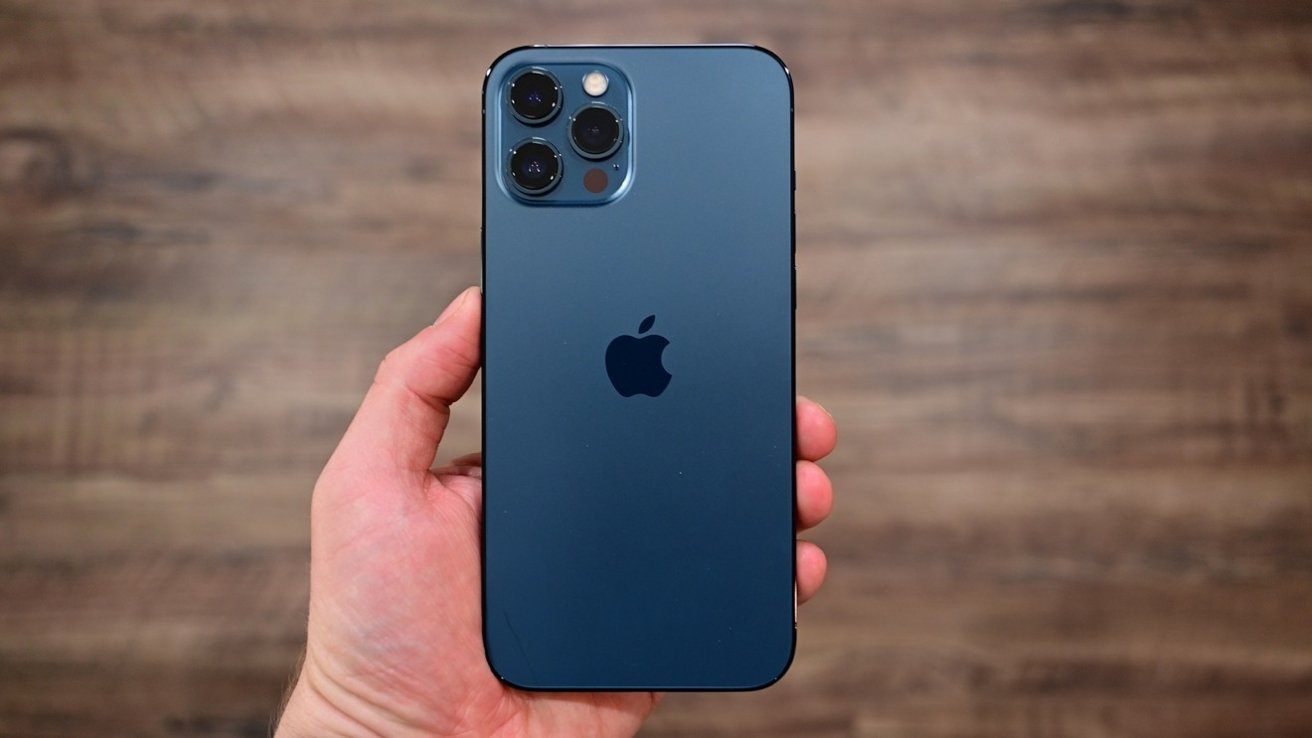
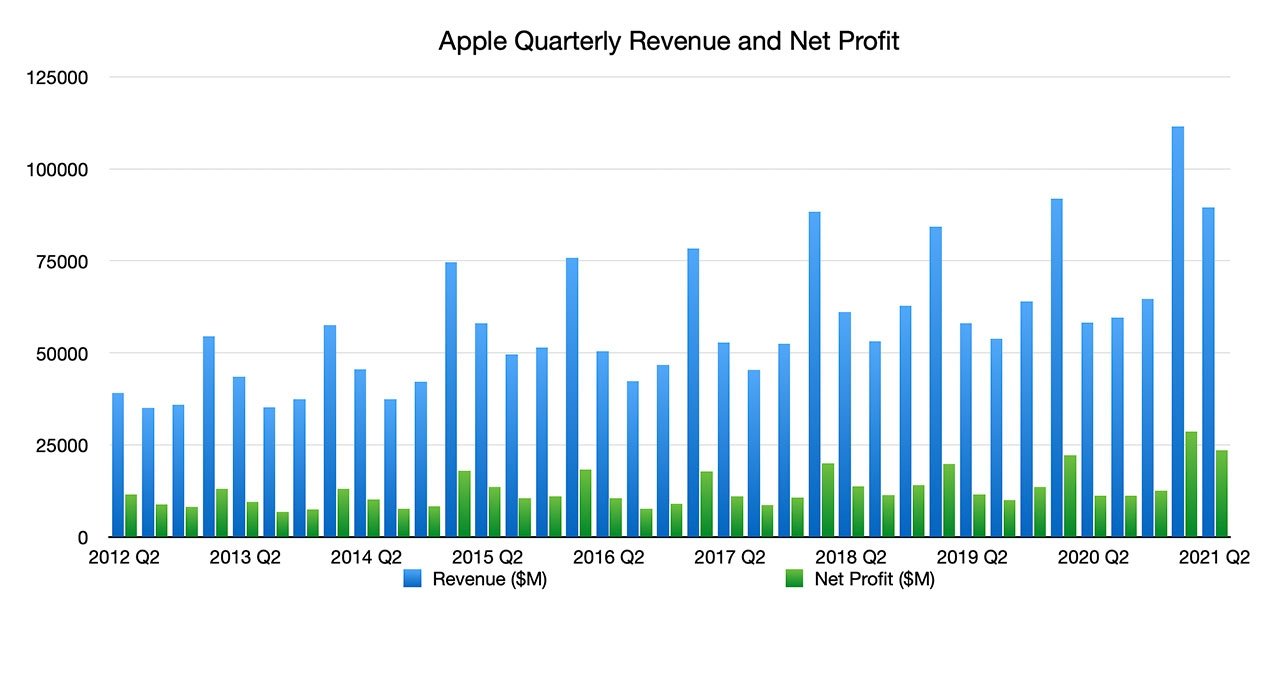
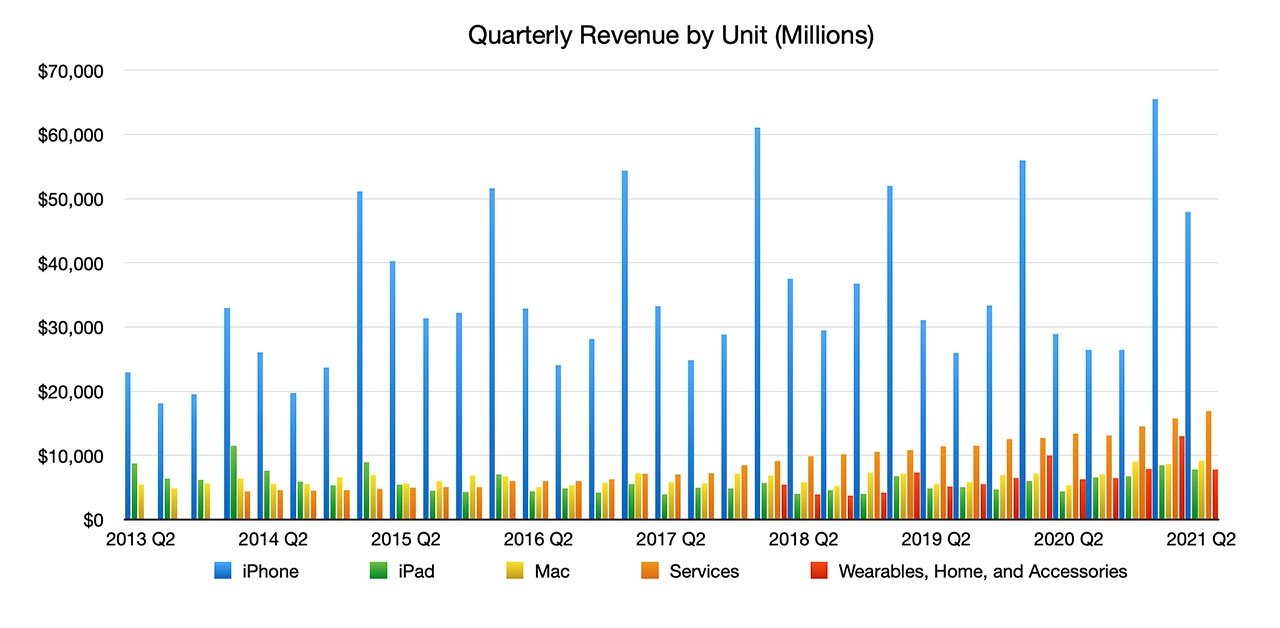







-m.jpg)





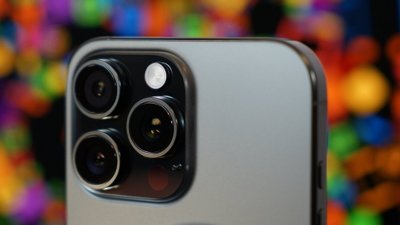
 Wesley Hilliard
Wesley Hilliard
 Christine McKee
Christine McKee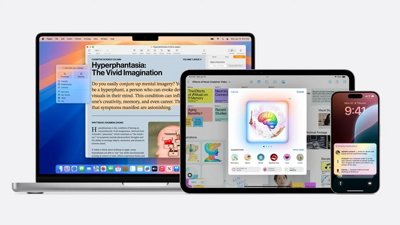


 William Gallagher
William Gallagher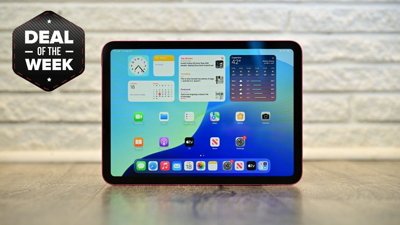
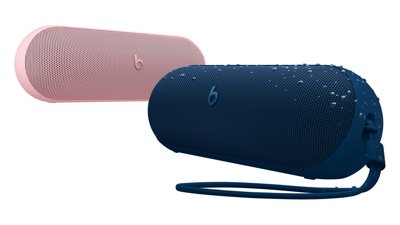

 Mike Wuerthele
Mike Wuerthele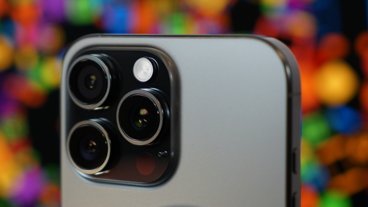



-m.jpg)



28 Comments
$1.4 per share earnings, the street was looking for under a $1...what a beast.
OMG! Well done Tim and the rest of Apple.
Apple
Peak iPhone since 2014
All those stimulus checks going to electronics.
Being realistic, Apple could reach $340 billion this year if the next two quarters hit $70 billion each.
but with all the euphoria around, I’d like to remind people about what happened in 2016, 2017 and 2018. 2016 also had a major factor for about a 50% sales increase in iPhones because of the new large sizes. I tried to tell people that sales could be lower next year, and possibly even for the year after that. The reason was that people bought the big phones in 2016 who would otherwise have bought a phone the year after, and even some, the year after. Then, those people wouldn’t buy a phone in those years. That turned out to be true before sales began to rise again, despite pundits stating that Apple had seen “peak” iPhone.
this year, we have the pandemic. Many companies are seeing large sales lifts if their products fall into the area where people who are staying home would want and need. Computing and telecommunications were two of those areas. Food delivery services were another. Apple’s sales rise of 54% is stupendous, but I believe that some of that would have been next year, and some from the year after that, just as in 2016. So don’t be surprised if the might be a sales fall next year if the pandemic is mostly gone, and people are getting back to normal. Then, as a result, don’t be surprised if those wonderful pundits start talking about “peak” Apple, with a drop in share price.